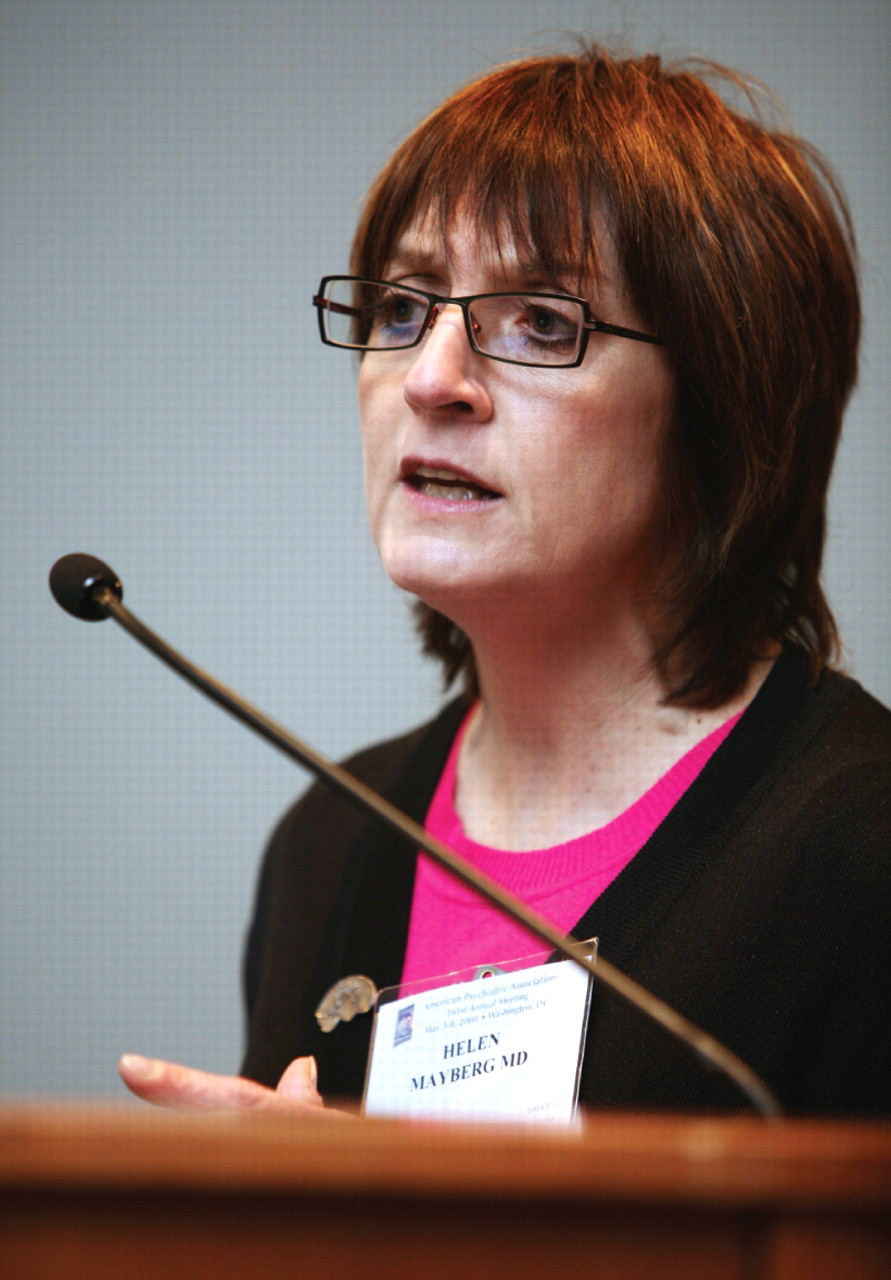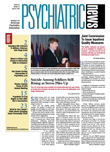Although deep brain stimulation (DBS) is currently approved by the Food and Drug Administration for Parkinson's disease treatment, researchers are also exploring its use in patients with treatment-resistant depression, with some promising discoveries.
At a lecture at APA's 2008 annual meeting last month, Helen Mayberg, M.D., a professor of psychiatry and neurology at Emory University, presented exciting evidence that not only offers hope to those whose depression has not been relieved with conventional treatments but also brings into focus the pathways in the brain that are directly involved in depression.
Clinical research has repeatedly shown that about one-third of patients with depression have little or no response to antidepressant treatment. Although electroconvulsive therapy (ECT) is effective for a proportion of patients who have inadequate or no response to pharmacotherapy, many remain resistant to the treatment.
Enter DBS, a surgical procedure that directly modulates certain neural wirings with constant electricity. Two electrodes are planted bilaterally at specific spots in the brain where they release continuous, low-voltage electrical shocks directly to the neurons around their tips. The electrical impulses suppress the physiological electrical currents transmitted among neurons and in effect “wipe out” the signal transmission in certain neural circuits.
The electrical current is supplied by a small battery implanted under the skin near the patient's chest.
The surgery to implant the device can be performed under local anesthesia, which allows the patient to remain conscious throughout the procedure. Because the precise placement of the electrode is critical, the operation is guided by brain-imaging tools such as magnetic resonance imaging (MRI).
The risks and side effects of electrode brain implantation are similar to those for the procedure in Parkinson's disease.
One advantage of the procedure is its reversibility. In addition, the voltage and frequency of the electric impulses delivered can be adjusted by the treating physician according to patient response.
Zapping the Mysterious Area 25
More than one brain circuitry is being explored as the target for depression treatment. In her presentation, Mayberg said her research focuses on stimulating the circuitry in the subgenual cingulate (sCg) area, also known as Brodmann area 25.
Although scientists are only scratching the surface of the neurological mechanisms that contribute to depression's pathology, the mysterious area 25 inside the anterior cingulate cortex has attracted much attention. It has been shown to be overactive in patients with depression or in healthy people experiencing artificially induced sad feelings. Antidepressants seem to suppress this overactivity.
This area of white matter sits on the crossroads of an extensive web of important pathways. It is heavily involved in cortisol regulation and stress response, sleep modulation, serotonin modulation and trafficking, emotion regulation in the limbic system, and motivation and drive.
“It's at the hub of all the tracks that can wreak havoc on all the core systems that are affected by major depression,” Mayberg said.
The premise of DBS is similar to that for ECT, as both approaches use externally applied electricity to alter the brain's own electrical transmission. Mayberg called ECT a matter of “rebooting the system,” while DBS continuously tinkers with a specific piece of neural wiring.
Patients Report Immediate “Lift”
In a pilot study conducted at the University of Toronto in 2002, six patients who had prolonged, debilitating depression and experienced no relief after taking at least four different antidepressants (five of the patients had failed ECT as well) received MRI-guided surgeries for DBS. Two electrodes were implanted through two small holes in the skull into the targeted areas. Patients were kept awake during the operation. To monitor for side effects, the researchers instructed them to report anything they might feel.
The effect was dramatic. “In the first operation, as we turned up the [electric] current slowly from zero to four volts, the patient suddenly said, 'Did you do something? I have a sudden sense of calmness,” explained Mayberg. “The phenomenon was seen not in every patient but [was] quite common.”
Unlike transcranial stimulation, the electric stimulation in the brain does not create a direct sensation. The immediate sense of calm, quiet, relief, and lightness reported by some study subjects occurred only when a specific spot was stimulated with a particular dose of electricity. These spontaneous reports of a “weight being lifted” were followed by patients' increased awareness, interest, attention, speech, and engagement with others in the room about 10 to 15 seconds later. They also mentioned changes in visual perception. “Patients said they thought the light in the room had been turned up, and the colors seemed more saturated,” Mayberg said.
Preliminary Response Gives Hope
The acute effects in the operating room are not, however, predictive of long-term efficacy in patients getting DBS, Mayberg reported. But with chronic stimulation in their brain a majority of the severely depressed patients got significantly better. Four of the six patients in the Toronto study achieved response (defined as a 50 percent reduction in scores on the Hamilton Rating Scale for Depression) by the end of six months after the implantation, and the response continued for a year. The study results were published in the March 3, 2005, Neuron.
The four patients who responded in the 2002 pilot study continued with the treatment and, after almost five years, remained well, Mayberg said. The study has since been expanded to 20 patients, and researchers have seen a comparable response rate and a consistent pattern: patients who responded early stayed well. The results of this new study will be published soon.
DBS alone will not cure those who have suffered from severe and prolonged depression for years. “If you've been sick for that long, you need behavioral rehabilitation,” Mayberg emphasized. “You cannot just put the stimulators in and send people on their way. This requires a highly coordinated collaboration between neurosurgeons and psychiatrists.”
The procedure carries risks inherent in any brain surgery, such as infection, hemorrhage, and seizure. The subcutaneously implanted battery and wires may pose risks for superficial infections. There has been no evidence of autonomic, motor, or overt mood changes observed in study participants so far, including in at least one person who had been receiving continuous stimulation for five years.
Mayberg cautioned that as promising as these data are, DBS is still experimental in relieving treatment-resistant depression. More trials must be conducted to clarify unanswered questions such as why certain patients still do not respond to the treatment, what long-term side effects may emerge, and what the safe and effective doses of electrical impulses should be. Researchers are also investigating the effect of DBS on depression in bipolar II patients. Other DBS studies are being conducted in New York, France, Argentina, Germany, and elsewhere. ▪

